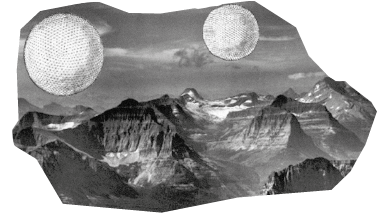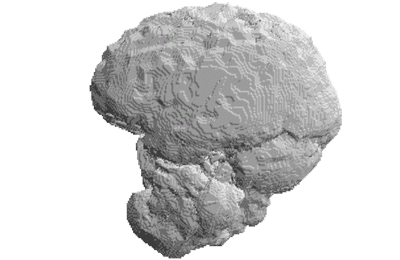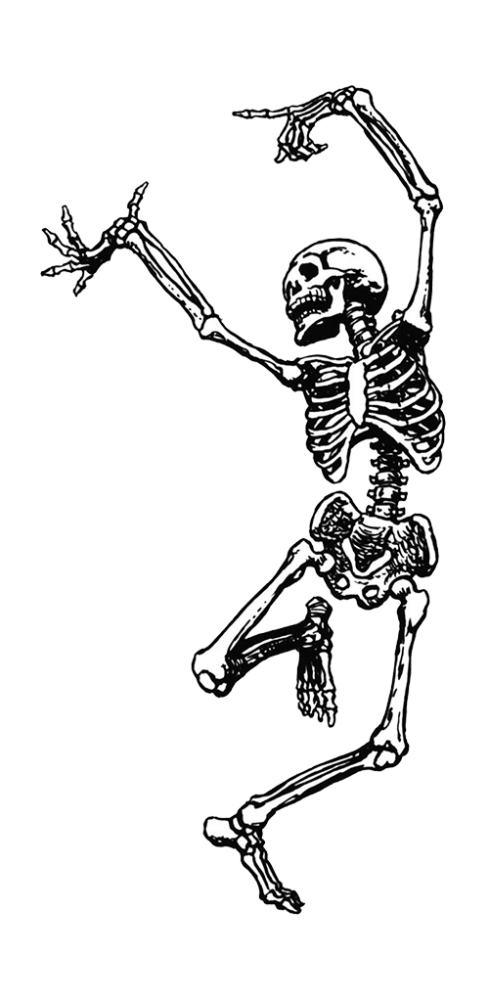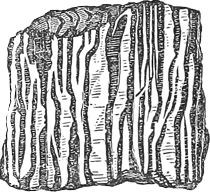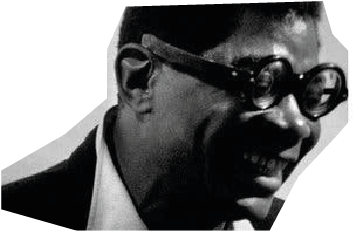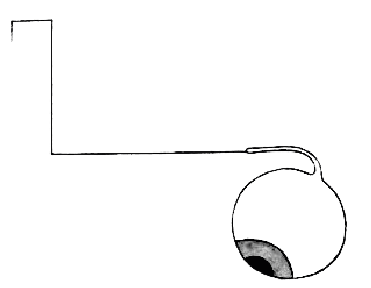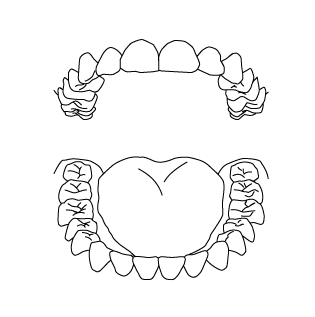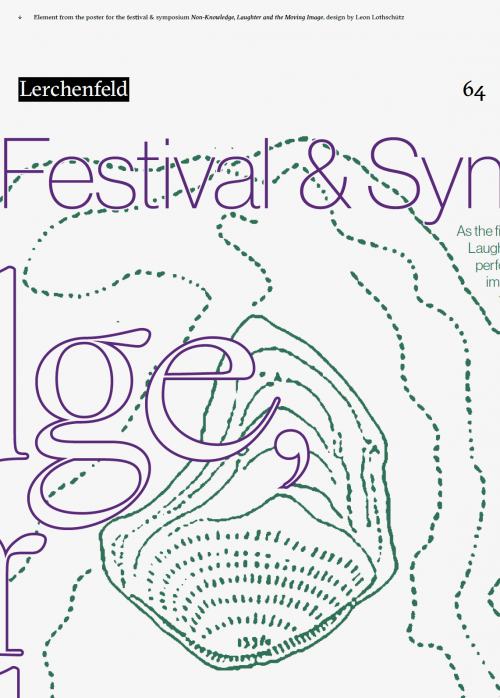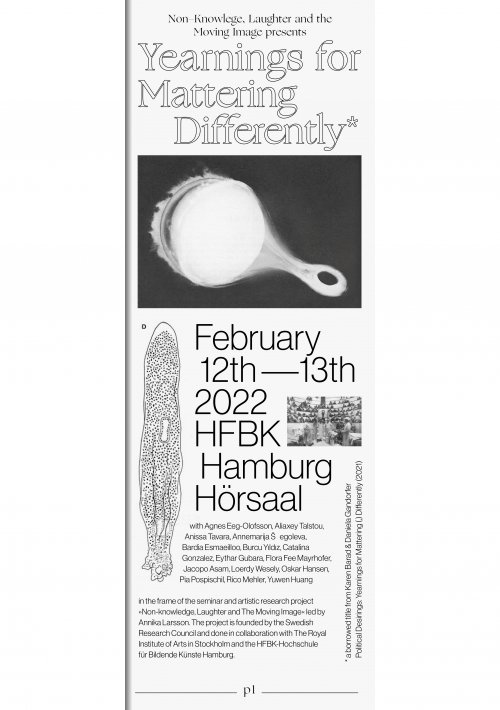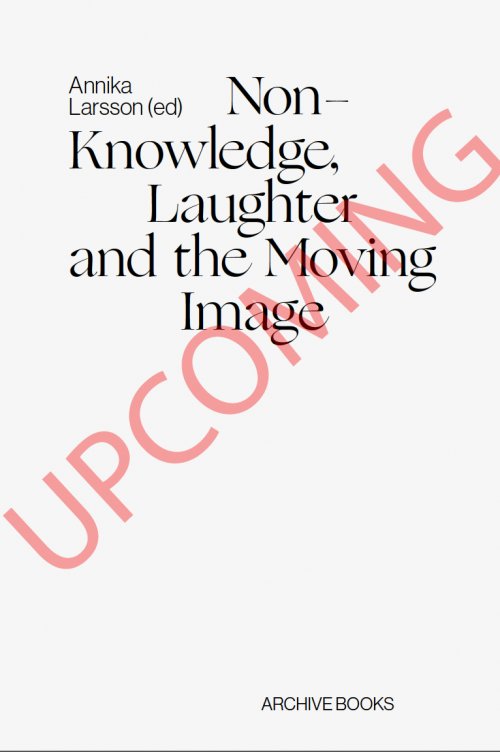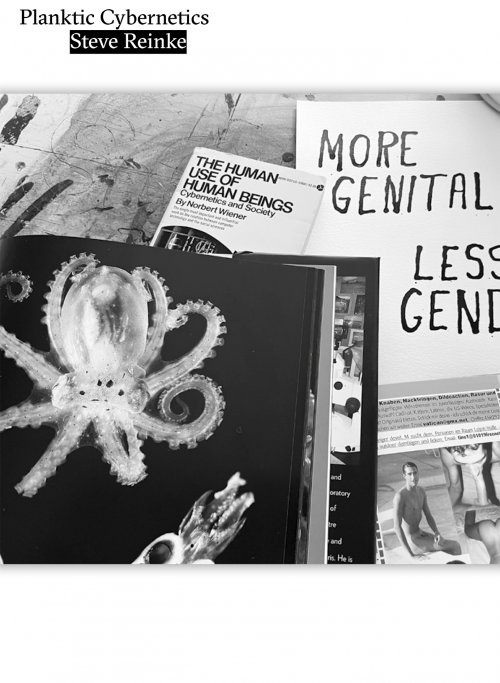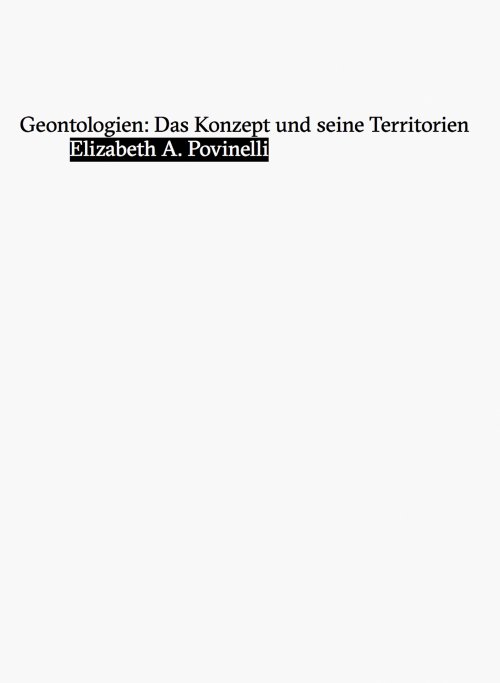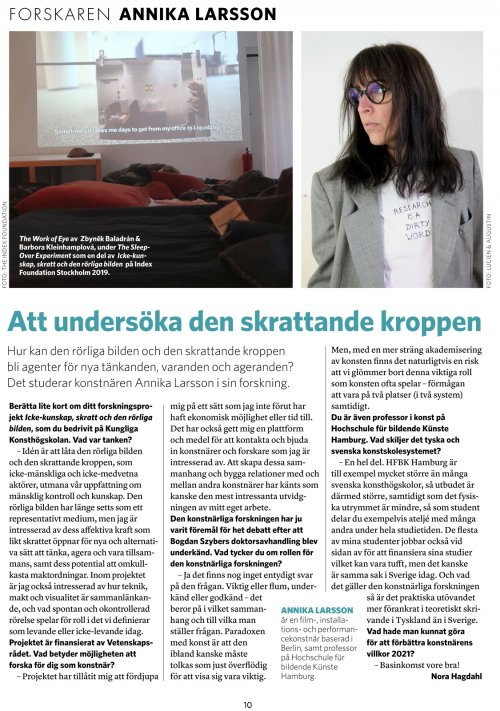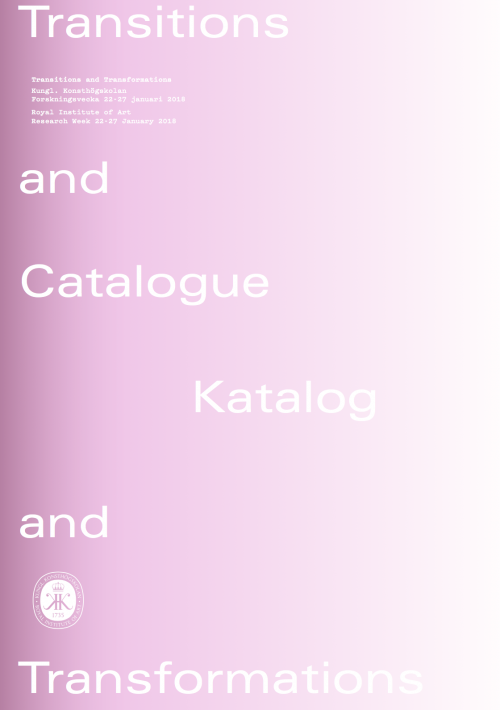
Publications
Annika Larsson, laughter-matter(ing)
Annika Larsson, Laughing-matter(ing), Lerchenfeld Magazine Nr.64, HFBK 2022 //
The Discourse of the Drinkers - The Laughing Body
The Discourse of the Drinkers – The Laughing Body, Annika Larsson, Peripeti, Årg. 15 Nr. 29/30 (2018)
tidsskrift.dk/peripeti/article/view/109627 //
"The serious aspects of class culture are official and authoritarian; they are combined with violence, prohibitions, limitations, and always contain an element of fear and of intimidation…
Laughter, on the other hand, overcomes fear, for it knows no inhibitions, no limitations.”
Mikhail Bakhtin
The film installation and book The Discourse of the Drinkers are exploring the bar as a social and political space. The project serves as an initial part of the artistic research project Non-knowledge, Laughter and the Moving Image that is examining the Moving Image and the Laughing Body’s capacity for new and alternative modes of thinking, acting and being, and their potential to overturn our habitual course and change the order of things. The three-year project began in January 2018, and is funded by the Swedish Research Council and hosted by the Royal Institute of Art, Stockholm in collaboration with Hochschule für bildende Künste Hamburg.
The title The Discourse of the Drinkers stems from a chapter in François Rabelais’ s 16th Century comic novels on The Life of Gargantua and of Pantagruel, a pentalogy that also partly serves as a narrative framework for the project. Departing from Mikhail Bakhtin’s notion of the “Carnivalesque” and “the Grotesque Body”, expressed in his analysis of François Rabelais works, the project embraces a mode that subverts and liberates the assumptions of a dominant order, a temporary state where social hierarchies of everyday life are turned up side down. Equally interested in queer and collective bodies, the “Grotesque Body” here is a body in the act of becoming, manifested through the open mouth - that laughing, drinking, talking and singing opens up the body to the world.
The film installation, as well as the main part of the book, consists of material that was filmed in the queer bar The Club in Neukölln and the 24h open bar Rote Rose at Kottbusser Tor in Kreuzberg in Berlin during a six-month period in 2017. Moving between documentation, fiction, observation, performance and dialogue, the project makes use of the moving image’s ability of opening up a virtual space, a place for unstable and unforeseen movements and meetings. Through montage the two bars are merged into one, creating a performative and relational space for moving and instable bodies, identities and stories. Scenes of conversation intercut with a stage performance by the trash drag ensemble the Real Housewives of Neukölln, whose collective voice acts like as a chorus for the film, commenting on the said and unsaid. The book consists of transcribed bar conversations, song lyrics and stills from the filmed material in juxtaposition with modified passages from the stories of The Life of Gargantua and of Pantagruel. Together with a selection of historical bar and intoxicant imagery, lyrics, texts and poetry they form a multi voiced document, a collective drinking and laughing political body.
Text by Annika Larsson for Peripeti #29/30 | 2018 | www.peripeti.dk
Working Together - with The Moving Image and the Laughing Body.
Existence is not an individual affair. / Karen Barad
What are the challenges for acting, being and thinking across human-non-human boundaries? How could the Laughing Body and the Moving Image, as non-human and non-conscious agencies, challenge our notion of human agency and lead us to other places of power where meaning and matter are intra-twined? What new forms of collaboration emerge when we re-situate ourselves as spontaneously responsive, moving, embodied living beings? Who is making whom, in a reality of continuously intermingling? What new worlds and futures could open up if we accept the possibility of notknowing? When interacting with digital machines and systems, how could we challenge protocols of inherited closeness and predictability?
In this research we are interested in shifting our attention away from The Moving Image and The Body as forms of representation, to them as matter and waves of psychic intensities and fields of individuation. We neither see the Moving Image or the Laughing Body as tools or property that we as subjects can control and own, nor do we look at images and bodies as separate entities with closed borders that we are studying from outside. Instead we are interested in a research entangled with them where we could learn from and with them, and from where new temporary borders and beings could emerge. In our search for ways of doing this E.I. The Blob came into being. E.I could stand for Earthificial Intelligence, or simply a mispronunciation or confusion of the acronyms A.I. or E.T.
E.I The Blob is a noise making intra-active “image-organism” sensitive to sound and touch. It is an open-end project done in collaboration with the programmer Stefan Kernjak, Kiona Niehaus and Abe Pezos, and created to explore new ways of thinking, being and acting with the Moving Image. E.I The Blob has come to play a central role in this research project by bringing in a nonhuman perspective to the research. As a (non-human) player-character-ghost it has allowed us to rethink our relation to the Moving Image, as well as opened up new ways to experiment with time, movement and toward the Moving Image as an intra-active* vibrant body. It has also opened up ways to rethink laughter beyond the human laughter, towards it as a liveliness of matter. With it we want to open up the digital towards more unknown protocols that allow for and spontaneous movement and change, as well as explore human to non-human social relations, where situated forms of response-ability exists, and where the inorganic and the organic systems are intertwined in a continual state of affecting and changing each other. Through the engagement with E.I. The Blob we are confronted with a form of intra-action that involves nonknowledge and a non-understanding, not only on a level of sense making centred around linguistic exchange but on a profound level of how can we structure a becoming together that is not based on verbal communication and agreement.
In her essay »Telling is Listening« the sci-fi author Ursula K. Le Guin writes about how communication is often seen as a one-way-transportation of meaning from A to B and how this image manifests a dichotomy in telling as active and listening as passive. To oppose this normative and limiting idea she advocates for another image of communication: two amoebas having sex. Amoebas usually reproduce by dividing themselves. But sometimes “two of them get together, literally, and reach out to each other and meld their pseudopodia into a little tube or channel connecting them.” Thus: when two amoebas exchange genetic “information”, “they literally give each other inner bits of their bodies”. When we follow Le Guin in her thoughts this tunnel is communication. In every form of communication we leave traces of us in the other, no matter if we are telling or listening because both forms of participating in an exchange are vital to the process of communication. This idea reveals a closeness to what the theoretical physicist and feminist theorist Karen Barad is describing when she talks about the entanglement of matter and meaning. There are no fixed boundaries around us, nor around other bodies or Moving Images, but rather a constant flow of particles behaving as waves and waves as particles, in a continual state of infecting and reconfiguring each other. I would like to think of the Laughing Body and the Moving Image as partakers in this “lively dance of mattering”, and for our proposed discussion I would like to invite these forces to disturb our reduced ways of reading the world and to ask how they could participate in the reconfiguring of the material-social relations of the world.
this arcticle was co-authered with Isabel Gatzke
-here we are using Karen Barad’s notion of the intra-action, “as a contrast to the usual “interaction", which assumes that there are separate individual agencies that precede their interaction. The notion of intra-action recognizes that distinct agencies do not precede, but rather emerge through, their intra-action” Barad, K. (2007) Meeting the universe halfway: Quantum physics and the entanglement of matter and meaning. Durham, NC: Duke University Press. pg. 10
References:
Le Guin, U. K, (2004) Telling is Listening from The Wave in the Mind: Talks and Essays on the Writer, the Reader, and the Imagination, Shambhala Publications,Boston, United States
Barad, K. (2007) Meeting the universe halfway: Quantum physics and the entanglement of matter and meaning. Durham, NC: Duke University Press.
The Images Are Alive - an interview with Annika Larsson, Lerchenfeld Magazine Nr. 47
Annika Larsson, Interview, Lerchenfeld Magazine, Nr47, 2019 //
INFRASONIC: A PROXIMITY TO WILDNESS: SALOME KOKOLADZE IN CONVERSATION WITH ANNIKA LARSSON
The throbbing of laughter across organisms, bodies, and technologies can help us understand how unstable and inhuman we actually are.
infrasonic>
1. One of your most recent projects is called “Non-Knowledge, Laughter and the Moving Image”. Laughter is a very interesting phenomenon, partly because majority of animals do not seem to have this ability to laugh (if they do, it is usually in response to tickling or play that involves stimulation of their bodies). And even though laughter was thought for centuries to be an inherently human trait, it has somehow been associated with being beyond humanity (witches, hysterical women, or possessed humans were believed to laugh uncontrollably). My question is whether contrary to the popular belief that we lose ourselves through laughter, we actually find ourselves, our humanity through it?
-Yes, this thought of laughter being an inherently human trait stretches back to Aristotle, but, as the scholar Mary Beard points out in her book “Laughter in Ancient Rome”, rather than the common belief that it refers to Aristotle's writings about laughter “as a display of superiority”, its actual source is more likely Aristotle's discussion of the human body and the role of the diaphragm, where he asserts that “the fact that humans alone are susceptible to tickling” is “due to the fineness of their skin” and to their laughing. In other words: that human bodies are responsive to touch - that they are affected by other bodies and affects other bodies.
As you also point out, responsiveness to tickling is not unique to the human, but exists in other animals too, such as rats for example. But we could also extend this to other forms of affective tickling that takes place between and inside organisms, bodies, technologies and environments.
Despite history's attempt to assign laughter to either nature or culture, one common view has been of laughter as a force and eruption in need for social regulation and control, including the self-control of the human subject over their own laughing body. And as you mention common belief have been that persons who could not control their laughter were possessed by unnatural forces, from the divine to the devil. With the civilisation process of laughter different forms of laughter also became ascribed to different bodies, where uncontrollable laughter came to be a proof of weakness, vulgarity, wildness or deviancy belonging to “the Other, the Savage, the Child or the Woman”. Jack Halberstam draws similar parallels around “wildness”, which he states “names simultaneously a chaotic force of nature, the outside of categorization, unrestrained forms of embodiment, the refusal to submit to social regulation, loss of control, the unpredictable” but what “has also served to name the orders of being that authority comes to tame”. My approach to laughter is in close proximity with his writings on “wildness”.
But I am also interested in how moving image technologies participates in the affective ecologies of laughter. Here I am interested in how they have been serving as instruments of mapping, capturing or eradicating certain forms of laughter, as well as in them as affective and sensing systems and machines. But mainly I am interested in how they participate in processes of formation and deformation, and what role they play in what matters and what is excluded from mattering.
So to come to your question whether we could find ourselves and our humanity through laughter, first we might need to ask us what Sylvia Wynter asks: “What Does It Mean to Be Human?” in a system that has rendered some of us deviant. Perhaps the throbbing of laughter across organisms, bodies, and technologies can help us understand how unstable and inhuman we actually are, that we are neither outside the world nor free (to participate or laugh when we decide to), but rather that we are interconnected with everything around us and inside us.
2. Are you interested in the state of drunkenness, e.g. in videos like “The Discourse of the Drinkers” and “Europe”, for the same reasons you are interested in the notion of laughter?
Yes, exactly. In drunkenness one can find forms of human-liquid laughter. This sort of laughter can also be found in other forms of human-nonhuman encounters and interactions, like human-plant laughter (cannabis), human-machine laughter (moving images, robots, computer systems) and human-wind laughter (the tickling wind). These intensive temporary states alters both our participation in the world as well as our perception of the world, which makes them interesting places to explore.
3. I have taken a handful of dance improvisation classes and your moving images often remind me of them. Social rules become secondary in improvisation as we reinvent the space and the ways of communication with other bodies through movement. The body has its own logic in a way, which often does not align with our lived realities. How do you position yourself, as a person who is holding the camera, in relation to the bodies that you are filming? What is the logic of the camera in relation to the logic of the body?
Indeed, I feel very connected to what you are describing. Filming for me is a very tactile and bodily experience, full of improvised movement where things rather emerge than are planned in ahead. Here I see the camera/lens/microphone both as extensions and transformations of my own body and perception, which might not bring me closer to the truth of things, but which puts me in contact with things in a different way, and which add an additional point of view, another layer of reality.
4. It seems like you use language very scarcely in your work, but still in pieces like “ANIMAL”, conversations carry an important weight. As an artist who primarily observes movement and the body, how do you approach and incorporate language in your work?
For many years I avoided language in my films. In my early work the only person that speak is in fact a machine (the synthesized voice of a cgi character in “New Gravity” from 2004). In my later work people do speak, but often as you point out, in a conversational manner, in states of affect or as a performative act. When approaching language with my film “Animal” language was in many ways already estranged through the protagonists wearing animal costumes. Also the conversation between the characters in “Animal” circles much around of being in that in-between-place, of simultaneously being in character and out of character. Also in “Discourse of the Drinkers” language is performative, and function both as something that reveals and protects. Here the identities that takes form through language are rather temporary than fixed. Many persons in the bar re-invented themselves throughout the evenings out of a need to protect their integrity or through states of drunkenness. What I learned through this is that is possible to connect to people beyond language, even when their names and stories are made up. So I guess the language that interest me is one that is polyphonic, affective and situated. It is very similar to how I see film-making, as a sort of grasping, full of hesitation, cuts, affect, rhythms, paradoxes, as well as of openings.
HFBK Hamburg Non-knowledge, Laughter & The Moving Image projects //



